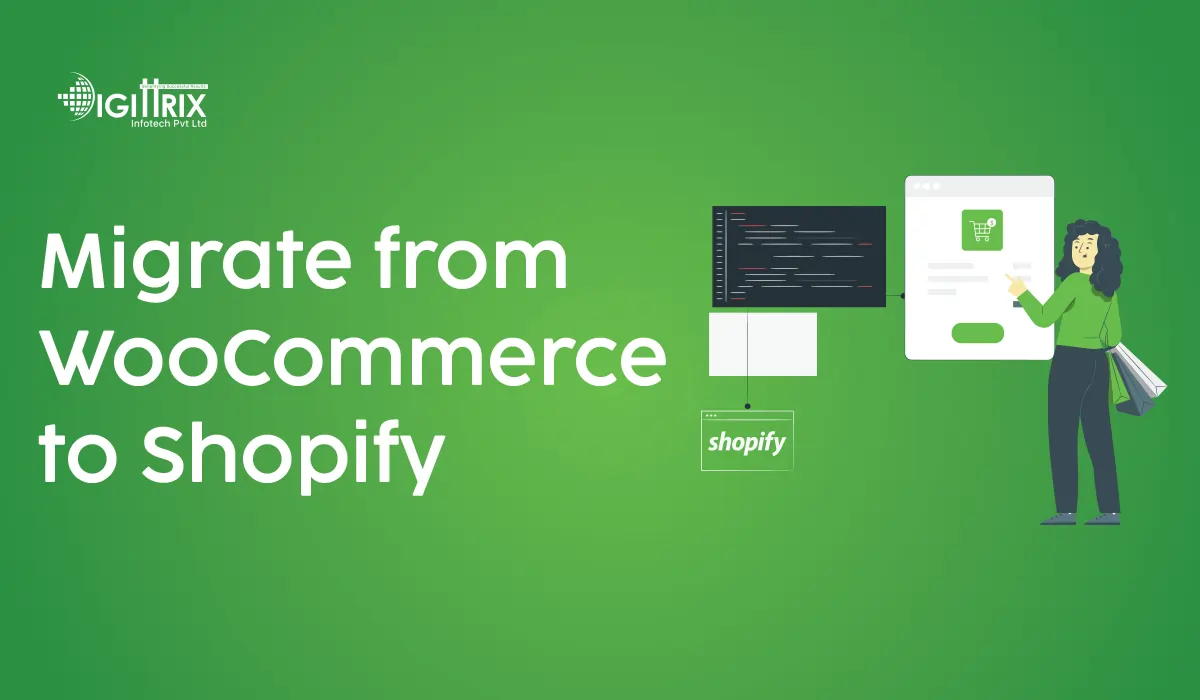Migrating Woocommerce to Shopify becomes a piece of cake in 2025. Backup your WooCommerce Store data, including your products, customers, and orders. Migration data tools on Shopify and third-party apps can be used to easily transfer all your data. The whole process helps you to reap full benefits from Shopify's rich features and more manageable administration.
Highlights
An enthusiastic developer and skilled business management expert with over a decade of experience in the field

Migrating from WooCommerce to Shopify is a major decision that can significantly enhance your online store’s performance, functionality, and flexibility. While both platforms offer excellent e-commerce solutions, Shopify's hosted services, user-friendly interface, and advanced features make it a preferred choice for many businesses in 2025. This comprehensive guide explores why migrating to Shopify is beneficial, common pitfalls to avoid, and detailed steps for a perfect migration.
Shopify is renowned for its intuitive interface, which requires minimal technical expertise. Different from WooCommerce, which often demands some coding skills and familiarity with WordPress, Shopify simplifies tasks such as adding products, managing orders, and customizing your store. Its user-friendly setup makes it ideal for business owners without a technical background. With e-commerce solutions like Shopify, businesses can effortlessly manage their online stores, regardless of their technical expertise.
One of Shopify's key advantages is its fully hosted solution. This means you no longer need to handle server management, security updates, or data backups. Shopify’s infrastructure ensures optimal store performance, enhanced security, and perfect flexibility, allowing you to focus on growing your business.
Shopify offers a robust suite of built-in features, including:
Additionally, Shopify’s app store provides tools for marketing, customer support, and inventory management, enabling you to expand your store’s capabilities. With the availability of Shopify App Development services, businesses can tailor their store to meet specific needs, enhancing the user experience and boosting operational efficiency.
Shopify’s infrastructure supports businesses of all sizes, making it easier to scale as your traffic and transaction volumes increase. It handles growth perfectly without requiring manual adjustments to servers or plugins.
Shopify’s 24/7 customer support team ensures quick resolutions to technical issues. Whether you face challenges during setup or operation, Shopify’s team is readily available to assist, enhancing the reliability of your store. In addition, e-commerce app development services can further streamline customer support with integrated solutions, ensuring that your customers receive quick and efficient service.
Incomplete Data Backup: Before starting the migration, back up all critical data from your WooCommerce store, including customer information, orders, and product details. Using backup plugins or tools like UpdraftPlus ensures your data remains secure during the transition.
Ignoring SEO: Platform migration can impact your search engine rankings if not handled carefully. Maintain SEO performance by setting up proper 301 redirects for all old URLs. Shopify’s built-in tools make it easy to create redirects, preserving your store’s visibility.
Missing Image Files: Images stored on external servers may not transfer automatically during migration. Verify that all product and category images are correctly migrated to your Shopify store to ensure visual consistency.
WooCommerce and Shopify handle tax and shipping configurations differently. Double-check these settings during migration to avoid discrepancies in pricing or delivery rates.
Testing is a critical step that ensures your Shopify store functions as intended. Conduct thorough testing for functionality, payment gateways, and product listings before making the store live.
Want to know how a classified app can help you grow your business? Check out Digittrix's blog on classified apps to find out more!
If the migration process seems complex, consider hiring Shopify experts. Professional developers can assist with data migration, theme customization, and troubleshooting, ensuring a hassle-free transition.
A perfect shopping experience is essential for customer retention. Collaborate with UI/UX designers to enhance navigation, layout, and mobile responsiveness. A well-designed store can improve conversion rates and boost sales.
Migration tools like LitExtension or Cart2Cart can automate the data transfer process, reducing manual effort and minimizing errors. These tools are especially useful for large stores with extensive data.
Migrating from WooCommerce to Shopify in 2025 offers numerous advantages, from enhanced performance to better flexibility. By carefully following the outlined steps and avoiding common mistakes, you can ensure a smooth transition. Whether you handle the migration independently or seek professional assistance, Shopify provides a robust platform to support your e-commerce ambitions.
For expert guidance, consider hiring Shopify developers or leveraging migration tools to simplify the process. With Custom Shopify App and e-commerce App Development, businesses can optimize their store’s functionality and user experience. With proper planning and execution, your Shopify store can unlock new opportunities and help your business thrive in the competitive digital landscape.
In the fast-paced digital world, migrating from WooCommerce to Shopify is no longer just a choice—it’s a strategic move. At Digittrix, a trusted website development company in Chandigarh, we specialize in perfect WooCommerce to Shopify migrations, ensuring your online store benefits from enhanced functionality, flexibility, and performance.
With over 14 years of expertise, our team of web developers in Chandigarh helps businesses transition effortlessly while retaining critical data like products, orders, and customer details. From creating custom designs to setting up Shopify’s advanced features, we handle every aspect of your migration journey, making sure your store thrives in 2025's competitive e-commerce landscape.
Ready to migrate your WooCommerce store to Shopify? Hire Shopify experts today and schedule a consultation with our skilled team at +91 8727000867 or email us at digittrix@gmail.com. With Digittrix, your store’s future is in expert hands!

Do you need help in Mobile App development?




Join over 1500+ businesses we've already helped!
Migrating to Shopify offers a hosted, user-friendly solution with advanced e-commerce features like easy inventory management, superior security, better flexibility, and dedicated 24/7 customer support. It helps enhance performance and is ideal for growing businesses.
No, with proper planning and execution, your product data, orders, and customer details are securely migrated to Shopify. We ensure no data loss and back up all information before starting the migration process.
The duration of migration depends on the complexity of your store and the amount of data. Typically, the migration can take from a few days to a couple of weeks. Our team works quickly to minimize downtime and ensure a perfect transition.
We ensure SEO continuity by setting up 301 redirects for old URLs and optimizing metadata, including titles and descriptions. Our expert team ensures that your store's SEO rankings are preserved and enhanced during the migration.

©2025Digittrix Infotech Private Limited , All rights reserved.